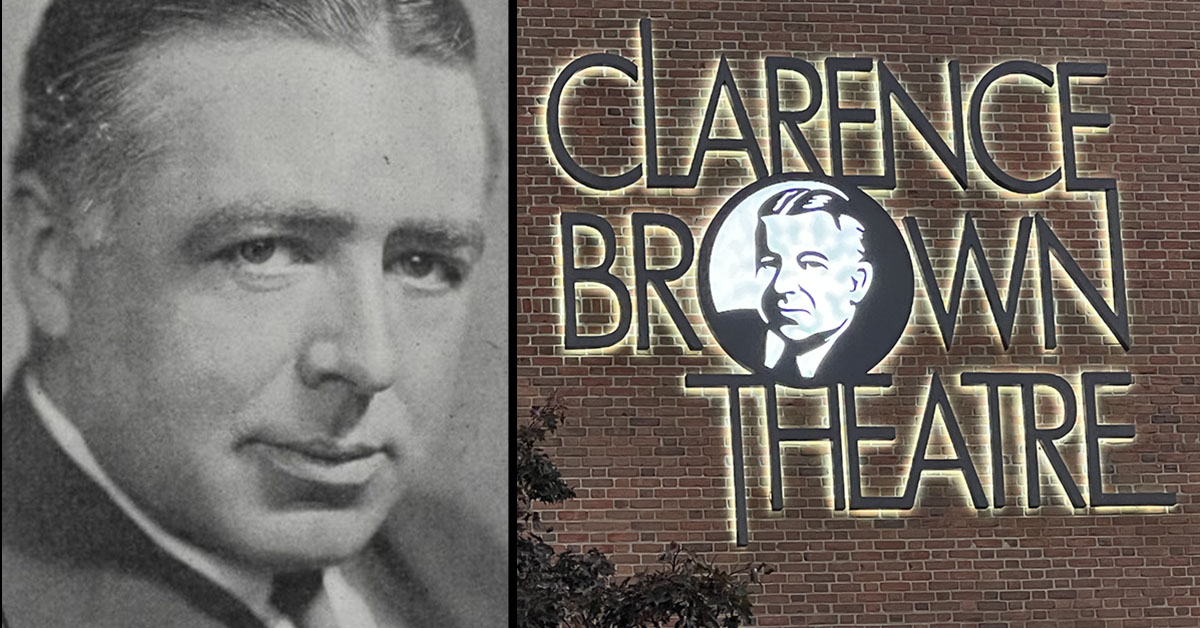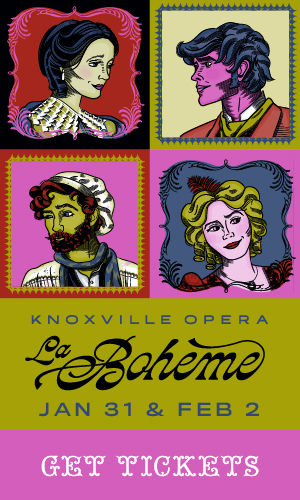Knoxville’s performing arts scene crossed a threshold in the fall of 1970 when the Clarence Brown Theatre opened as a part of the University of Tennessee’s theatre program. With the subsequent creation of a LORT professional company as resident adjunct to UT’s Department of Theatre, the name Clarence Brown became synonymous with professional and academic performing theatre in Knoxville.
Of course, film buffs knew the name of Clarence Brown as a Hollywood film director whose work began in the silent film era and included a five-decade career of 52 feature-length films that lasted into the 1950s— a career of notable works such as National Velvet, The Yearling, and Intruder in the Dust. His local connection to Knoxville and UT began when his family moved here when Brown was 10 years old in 1900. Graduating from high school at age 15, he subsequently attended and graduated from UT with two degrees in Engineering at the age of 20.
Because of his interest in things mechanical, Brown found himself attracted to the new art form that was motion pictures. Ironically, despite this attraction, he became known over the years as an actor’s director, forming lasting friendships with Hollywood talent such as Elizabeth Taylor, Clark Gable, Jimmy Stewart, Rudolph Valentino, Gregory Peck, Jean Harlow, Mickey Rooney, Joan Crawford and Greta Garbo.
Following that long career, UT officials came calling in the late 1960s seeking support for building a theatre on the Knoxville campus. At the urging of Brown’s wife, Marian, the couple eventually committed to substantial gifts that made not only the initial construction of the Clarence Brown Theatre possible, but also a continued endowment to the theatre program.
To remind Knoxvillians of the man and career behind the name Clarence Brown, the Knox County Public Library will present the Clarence Brown Film Festival August 16-20, a grouping of film screenings, talks, and tours in a number of locations. Notable appearances include Claude Jarman Jr., star of The Yearling and Intruder in the Dust, and Gwenda Young, author of Clarence Brown: Hollywood’s Forgotten Master. Other presenters are Dr. Chuck Maland, former Head of the English Department and Chair of the Cinema Studies Program at UT; film critic Farran Smith Nehme, storyteller Laura Still, and the Knoxville History Project’s Jack Neely.
“It’s the 50th anniversary of the original Clarence Brown Festival at UT,” explains McClung Historical Collection Manager Eric Dawson, “so it seemed like a good idea to celebrate it and Brown with another festival.”
“We started out talking about recreating the lineup of the original festival, but knew we wanted to screen The Signal Tower, as it was recently restored, and has only been screened a few times. And we’re excited to be showing a 35mm print of it at the Tennessee Theatre.”
The Signal Tower will be screened on Saturday, August 19, at 8:00 PM, and will feature live musical accompaniment from Roger Miller of the Anvil Orchestra.
Screenings also include National Velvet (from 1944 and with a young Elizabeth Taylor) in an outdoor screening on the CBT plaza — Friday evening, August 18 at 8:00 PM; Anna Karenina at the Tennessee Theatre—Saturday, August 19, 4:00 PM; The Yearling at the Tennessee Theatre —Saturday, August 19 at Noon; The Eagle at the Tennessee Theatre — Sunday, August 20 at 5:00 PM, featuring silent film organist Ron Carter on the Mighty Wurlitzer; Intruder in the Dust at the Tennessee Theatre — Sunday, August 20, 2:00 PM; Smouldering Fires at Central Cinema — Thursday, August 17, at 7:00 PM, featuring a performed score by William Wright.
For a complete listing and description of the Festival lectures and tours







Thanks, Alan, well done. And great info.
Thanks!
Do I need a ticket to get into any of the events?
Enjoyed reading your article. Wish I could be there for the festival. One of my great college memories was being on the plaza when CBT was dedicated 50 years ago!
All of us young theatre folk were so excited that Clarence Brown was actually in attendance! As time passed, and we grew in our knowledge of theater and film, that moment became even more historic. What a time it was.❤️